- Unit12 May 2012
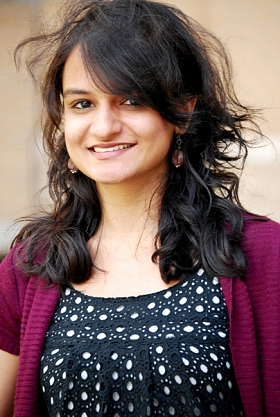 Sana Suri
Sana SuriSana Suri has joined the Unit to complete the second lab rotation of her M.Sc. in Neuroscience at the University of Oxford. Sana will work in the group of Pete Magill, with the broad aim of elucidating the dopamine dependence of activity in the external globus pallidus. Sana’s past work was focussed on the imaging of correlates of neuronal function in humans (and so, we must collectively help Sana to see how the brain really works!*).
*This is the biased personal opinion of an electrophysiologist, and does not represent the official view of the MRC or any of its stakeholders.
- Unit12 May 2012
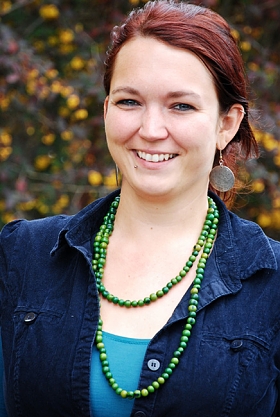 Silvia
SilviaSilvia Willadt has joined Marco Capogna's lab supported by the Swiss National Science Foundation. Her project aims to identify the cellular and molecular changes induced after fear conditioning extinction in identified GABAergic cells of the rodent amygdala. Silvia, who originally is from Freiburg, Germany, awarded her PhD at the Biozentrum, University of Basel, Switzerland, under the supervision Prof. Kaspar Vogt. During her PhD, Silvia characterised the spatial distribution of inhibitory synaptic potentials recorded from the dendrites of CA1 pyramidal cells by using voltage imaging.
- Unit8 May 2012
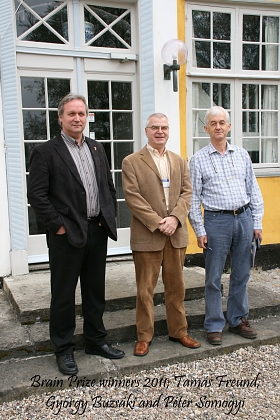
“Synaptic wiring specificity and network dynamics in the brain” Brain Prize symposium was held at Sandjberg Conference Centre, Denmark 6-8 May, as part of the Danish Neuroscience Society meeting. Amongst the invited speakers Peter Somogyi spoke on “GABAergic contribution to the chronocircuit of the hippocampus”. The meeting was followed on the 9th of May by the awarding of the 2012 Brain Prizes www.thebrainprize.org in Copenhagen by the Grete Lundbeck European Brain Research Foundation. Nominations for the 2013 Brain Prize are open to any neuroscientist or members of the public.
- Unit1 May 2012
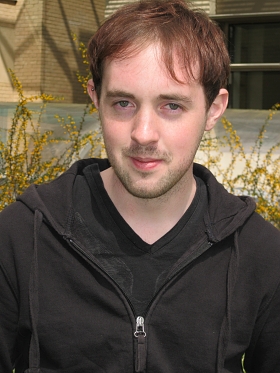 Steven Cuell
Steven CuellSteven Cuell graduated from Cardiff University in 2011 with a BSc (Hons) in Psychology. He has worked for two years as a research assistant with Dr Murray Horne and Prof John Pearce FRS, predominantly examining the extent to which mechanisms of associative learning explain spatial learning in rats, mice and pigeons. After graduating, Steve moved to the University of Oxford to work with Prof David Bannerman in the Department of Experimental Psychology, before commencing an MSc in Neuroscience, funded by a Wellcome Trust 4-year scholarship. As part of this course, he has spent four months working with Dr Jill O'Reilly at fMRIB.
Steve has joined the unit for five months as a member of Dr David Dupret's group, where he will be investigating hippocampal network activity during a spatial learning task in mice.
- Unit19 Mar 2012
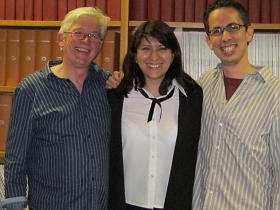 (L to R) Paul Bolam, Cristina Martínez-González and Juan Mena-Segovia
(L to R) Paul Bolam, Cristina Martínez-González and Juan Mena-SegoviaCristina Martínez González has successfully defended her D.Phil. thesis entitled: "Topographical organisation of non-cholinergic neurons in the pedunculopontine nucleus" on the 19th of March 2012 (only minor corrections have been requested by the examiners).
Cristina was supervised by Prof. Paul Bolam and Dr. Juan Mena-Segovia. Her internal examiner was Dr. Ned Jenkinson, Research Fellow at the Nuffield Department of Clinical Neurosciences, and her external examiner was Prof. Philip Winn, Head of the Strathclyde Institute of Pharmacy & Biomedical Sciences at University of Strathclyde.
- Unit14 Mar 2012
9d59.jpg?itok=zZu28FOF)
The Unit held its eighth annual Open Day for local schools on the 14th of March. Six local schools attended the day and 110 students and teachers took part in the activities. Dr Marco Capogna introduced the visit with a short presentation of the Unit's work; we are aiming to advance fundamental knowledge of the brain and to contribute toward a better neurobiological understanding of neurological and psychiatric disorders. He presented examples of Unit's results, from molecules to single neurons and neuronal networks. Groups of students went to visit the laboratories getting hands-on experience with instruments, real specimens and experiments, providing a glimpse of what to expect in a working research laboratory. They all visited two of the research groups.
Student feedback shows that they found the visit stimulating, and that the research they were shown was interesting. Several students asked questions about how to become a research scientist, as well as what it was like to do research, and how well it was paid. It was clear that the teachers also found the experience stimulating, and we were again told that after last year's visit some students were inspired to make University applications for various bioscience degrees, including neuroscience and medicine. From the students' responses the highlights of the visit included: looking at specimens in the electron microscope, cells in the hippocampus, the rat's brain activity, injecting DNA in gel, seeing the confocal microscope images, watching activity of the neurons in brain slices, being told about how to monitor brain activity and how this can represent learning processes. Thanks to all who participated and made this day possible.
- Unit13 Mar 2012
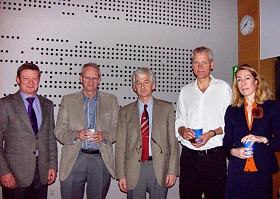
Peter Somogyi delivered the Brain Prize public lecture, “Co-operation in science and neuronal societies of the brain" on the 13th of March 2012 to an audience of 940 in the Per Kirkeby Auditorium at Aarhus University as part of their public lecture series. The well-known Danish science reporter and writer Ms Lone Frank questioned Peter after each of the two 40 min presentations. In the first part he presented the challenges of explaining and treating neurological diseases and explained the basic rules of neuronal communication, such as synaptic excitation and inhibition. He showed their classical in vitro experiment on the synchronisation of pyramidal cells in the hippocampus by GABAergic basket cells (Cobb et al., 1995). In the second part he introduced O’Keefe’s discovery of place cells and illustrated how cell assemblies represent behaviour predicitive population signals as shown by the brilliant experiments of Buzsaki’s group (Pastalkova et al., Science, 2008. 321. 1322). He then showed how specific GABAergic cell types differentiate their GABA release times and contribute to population network activity during theta and ripple oscillations. At the end he summarised his concern about the threats to tomorrow’s world and his motto of why he continues to seek new knowledge.
- Unit7 Mar 2012
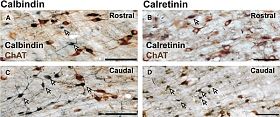
Subpopulations of cholinergic, GABAergic and glutamatergic neurons in the pedunculopontine nucleus contain calcium-binding proteins and are heterogeneously distributed
Published in this month's European Journal of Neuroscience is a study by Martinez-Gonzalez et al. on the calbindin- and calretinin-expressing sub-populations of pedunculopontine neurons.
- Unit6 Mar 2012
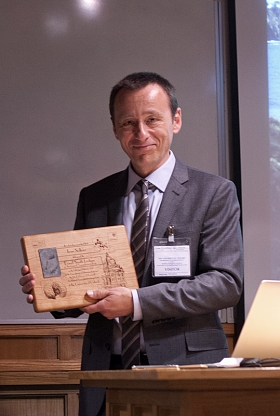
Cell-type specific regulation of interneuronal microcircuits in the cortex
Professor Ivan Soltesz, Department of Anatomy and Neurobiology, University of California Irvine. http://www.anatomy.uci.edu/soltesz.html delivered the 7th David Smith Lecture on the 6th March 2012, followed by dinner at Brasenose College.Professor Soltesz's research focuses on how brain cells communicate with each other and how the communication changes after fever-induced seizures in early childhood and after head injury. The general goal is to understand how neuronal networks function and dysfunction, in order to discover new therapies to prevent epilepsy.
Professor Soltesz was first a visiting undergraduate then completed his doctoral research in the Unit from 1989-1990 and was also a postdoctoral scientist.
The Lecture each year celebrates the vision of the previous Chair of Pharmacology and founding Director of the Unit, Prof. A. David Smith, currently Honorary Associate Director and Emeritus Professor, and the successful conclusion of the last quinquennial scientific review of the Unit.
To commemorate the Lecture, Prof. Soltesz received a laser engraved cherry wood plaque, designed by Unit Artist Ben Micklem and illustrating aspects of anatomical neuropharmacology at Oxford from molecules to the brain.
- Unit6 Feb 2012
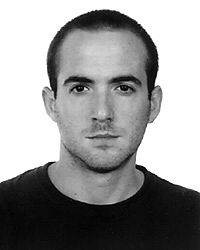
We are pleased to welcome Dr Miguel Valencia from CIMA-University of Navarra (http://www.cima.es/areas/neurosciences) for a month visit to the Unit, who will be working in collaboration with Dr Juan Mena-Segovia on the dynamical interaction between brain structures in Parkinsonism.
Miguel is a Superior Engineer in Telecommunications with profound interest in biomedical research. In 2006 he finished his PhD in Physics studying dynamics of cortical and basal ganglia oscillatory activity in healthy subjects and in Parkinson's disease. Then he spent two years as a postdoctoral scientist at the Centre de Recherche de l'Institut du Cerveau et de la Moelle Épinière (http://www.cricm.upmc.fr/) (Paris, France), developing techniques for the analysis of complex brain networks. He is a specialist in signal analysis, and currently he is studying complex systems dynamics and has developed applications and software utilities opening new approaches to analyse brain signals.